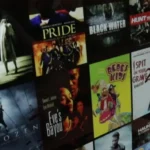Upper Mustang Trek is a magical trekking experience in the semi-desert region of Nepal which was a restricted area for foreigners until 1992. It offers a unique cultural and natural experience with its contrasting landscape and traditional villages.
The cost of the trek depends on several factors including the season, airfare, accommodation, and miscellaneous expenses. We have compiled a list of the most important costs to consider when planning your trip to Upper Mustang.
Permit fee
The Upper Mustang region is a restricted trekking zone, and foreigners require a special permit to trek there. The permit cost is USD 500 per person, which is valid for 10 days. The money is used to protect flora and fauna in the region. Besides the permit fee, you will also need to pay for a TIMS card and ACAP.
You can only do the Upper Mustang Trek with a licensed government-registered trekking agency. It’s best to visit this region in spring (March to May) or autumn (September to November). The weather is clear and dry, making it easier for you to see the breathtaking mountains.
If you want to take a hot bucket shower, it’s worth paying the extra fee. The teahouses usually charge USD 5 for a shower. You can also buy souvenirs from the local shops and vendors. However, beware of buying antiques and other pricey items. They may be fake. Also, avoid taking anything from the Tibetans.
Transportation
The Upper Mustang trek is a once-in-a-lifetime opportunity to experience Nepal’s Tibetan-influenced culture and landscape. This mountainous, desert-like region lies in the rain shadow of the Annapurna and Dhaulagiri ranges. During the trek, you will visit ancient monasteries and Chortens (Buddhist shrines) and traditional Mustang villages. You will also have the chance to explore the walled city of Lo Manthang, the former royal capital of Mustang.
A special permit, called a restricted area permit, is required to enter the Upper Mustang region. This permit costs USD 500 for a 10-day trip, and it is not available to individual hikers. In addition, you must obtain a permit from a registered trekking company.
The cost of transportation for this trek varies depending on the type of vehicle used and the amount of people in your group. You should budget for at least USD 15 to 20 per day, including food and beverages. You can also save money by bringing reusable water bottles, which are more environmentally friendly than buying bottled water.
Accommodation
If you are planning to trek Upper Mustang, it is important to know the accommodation costs. You can choose to stay in local tea houses or homestays, which will vary in price. However, you can expect to pay USD 6 or more per night on average. You should also factor in the cost of meals, as well as additional services such as hot bucket showers and extra food.
The cost of transportation is another significant part of the Upper Mustang trek. You can take local or tourist buses, or even daily flights from Kathmandu to Pokhara. You can also hire a porter or porter-guide to help you with your luggage. A porter will carry up to 20 kg of luggage while a porter-guide will do both the job of a guide and a porter.
The Upper Mustang Trek is an adventurous journey into a restricted region of Nepal. You will be able to experience the unique culture and traditions of this area, which is reminiscent of Tibet.
Food
If you are planning to visit Upper Mustang, you should be aware of the food costs. Most teahouses along the trek charge a fee to boil water and serve it to you. This is a good way to avoid the risk of bacterial infection from unboiled water. Most teahouses also provide a bucket shower for a small fee. Tipping is not a must, but the guides and porters deserve some amount of money for their services.
The Upper Mustang Trek is a unique and rare opportunity to explore the hidden kingdom of Nepal. Its geographical and political isolation has allowed it to preserve its distinct culture, unexplored natural components, and centuries-old monasteries. The arid land of Upper Mustang is home to ancient caves, holy fossil rocks, and cliffs. The capital city of Lo Manthang is a walled town that was once the seat of the Tibetan King. Here, you will see a variety of Stupas, Chhortens, Kaanis, prayer walls, and centuries-old monasteries.






Comments closed.